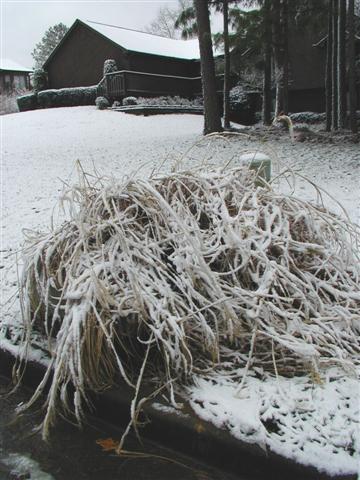Georgia Gardener Newsletter Cool Plant: January 24, 2008
This ornamental grass collapsed under the snow
My family always makes fun of me because I am a Weather Channel junkie. Ask me any time and I can give you the forecast (high/low
temps, precipitation and wind) for the next 5-7 days. I even have a weather station mounted on my roof which downloads to this
web site so that I can get instantaneous information. I need to know because I spend so much of my time outdoors. So, it's safe
to say that I usually know when winter weather is headed our way days in advance. I strive to keep my garden prepared for
unexpected frosts (both early and late), snow and ice. These last two always give me a shudder - and not because it's cold.
We rarely get enough snow to cause significant trouble. And by trouble, I don't mean frost bitten plants, I mean plants
weighted so heavily that they bend or break. These problems are much more common up north. However, our snow is usually
the wet kind that can cause problems in amounts as little as an inch. The plants most commonly weighted down by wet snow are ornamental
grasses and
evergreens. Ornamental grasses can be pruned to solve the problem but Leyland Cypresses, Deodar Cedars, Southern Magnolias,
Arborvitaes, spindly Pines, upright Junipers, Cryptomerias and trees covered with English Ivy
seem to be the most likely to
suffer breakage. Since snow doesn't often stick, it's possible to brush it off of evergreen plants. Use a broom for those branches
you can't reach. You can even gently shake the trunk or limbs to dislodge snow at the very top but be prepared for it to land on your head.
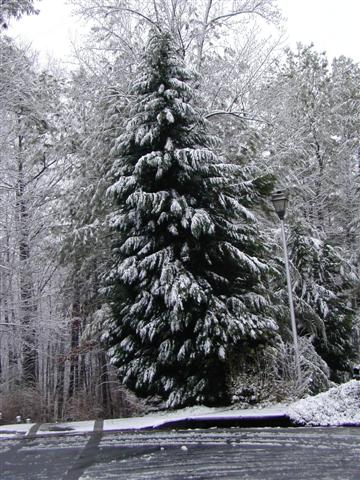
What really strikes fear in my heart is a forecast of freezing rain which will coat just about everything with ice. It only takes
a 1/4 inch of ice to cause real damage. All plants are susceptible to the damaging effects of ice - even those without leaves. Plants
that become encased in ice will suffer little if any damage from the cold, but the weight will be tremendous. During an ice storm,
you can literally hear trees cracking and breaking under the weight.
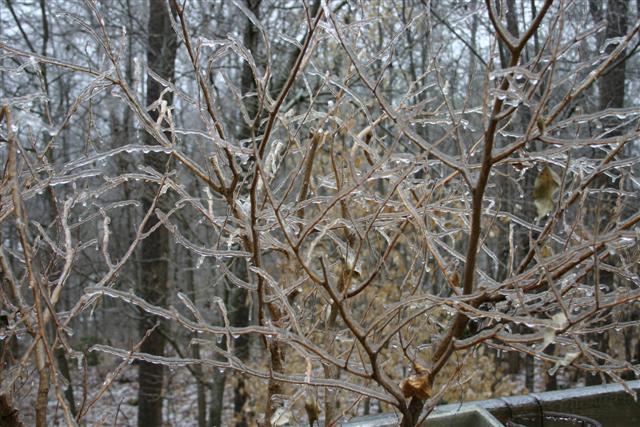
For smaller landscape shrubs and trees, it's possible to cover them with a plastic sheet before the ice event begins. Larger
trees will simply have to weather the storm. Do not go near larger trees that are covered with ice.
Do not try to knock the ice from them. Breakage can occur without
warning.
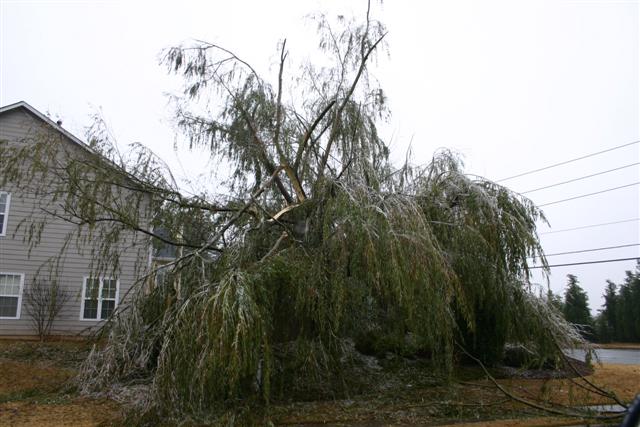
The most susceptible plants to ice are those listed above. In addition to those above: Willows, Bradford Pears, Crape Myrtles with
spindly branches and the smaller branches of many hardwoods can easily break. Trees that have internal decay in major branches
or the trunk can have catastrophic failures without warning.
After the ice has melted, prune away broken limbs. Have larger trees inspected by a company that has Certified Arborists. Selective
and professional pruning can remove or shorten weak limbs to reduce the risk of breakage. Remove English Ivy from all trees. For better
results, have these maintenance tasks performed in the fall BEFORE the threat of winter ice storms.
Bent or Leaning but not Broken
If after the snow and ice are gone you have trees and shrubs that are bent or leaning, inspect the base of the plant to see if any heaving
is present. If you spot roots or soil that have raised up on one side, the danger of falling is still present. For smaller landscape
plants, try to gently push them back towards vertical and stake them. You may need to dig around the base to loosen the roots.
Larger trees should be assessed by a professional. If the
trunk and lower parts are intact but the top is leaning - give it a few days of warm sunny weather. Many trees and shrubs will
"right" themselves. Others will have to be staked straight until spring or summer.
And Finally....
Some plants just look really cool in the snow like this Redtwig Dogwood and Harry Lauder's Walking Stick.
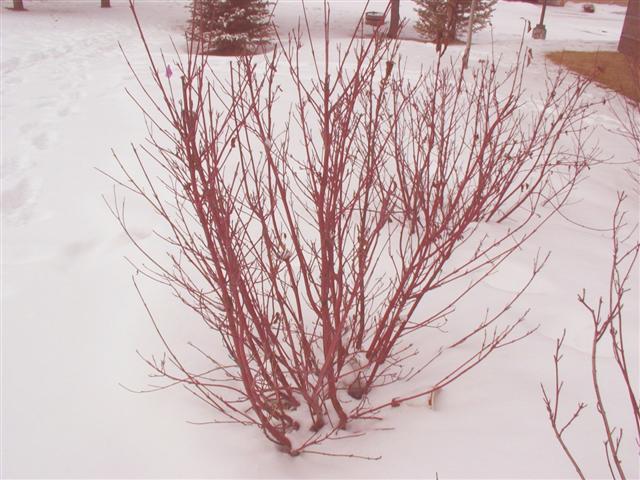
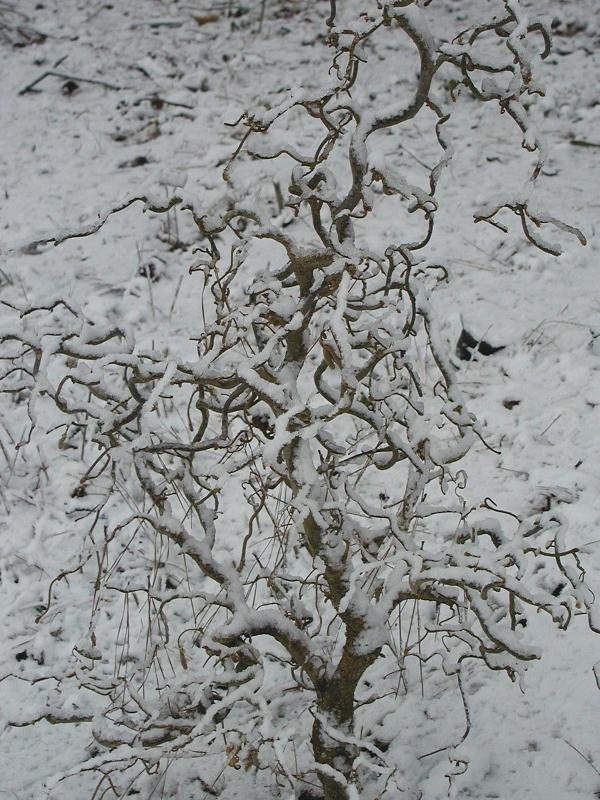
Copyright © 2008 by Theresa Schrum - All rights reserved
No part of this website may be reproduced without the expressed written permission of Theresa Schrum
